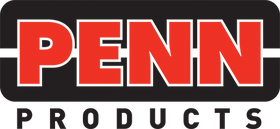Manufacturing FAQ
Where are your parts manufactured?
100% of all our products are manufactured in the USA at our manufacturing facility located in central Connecticut.
How are your parts manufactured?
Our primary process is injection molding. For custom imprinting, we have in-house hot stamping and pad printing, and we outsource screen printing locally for applications that demand that process. Of course we assemble, label, and outfit with custom foam right here.
What is a "Living Hinge"?
A "living hinge" (sometimes called an "integral hinge") takes advantage of the special characteristics of the polymer polypropylene. Plastic boxes designed this way feature a flexible hinge of plastic that is molded as one piece with the rest of the case, connecting the sturdy top and bottom sections. The result is a hinge with excellent flexibility and superb flex life.
What is an "interlocking hinge"?
An Interlocking hinge for a plastic case is a design where the case lid and the case bottom are molded separately with the base having a horizontal pin molded on the top edge and the lid having a horizontal cylindrical shape partially open molded on the bottom edge of the lid. The design is such that the two parts can be snapped together so the lid will be attached to the base and be able to open and close freely.
What is injection molding?
In injection molding, plastic granules are heated and "injected" under pressure into metal molds, where the molten plastic hardens into a designated shape. The mold then opens and the newly formed part is removed and inspected, ready for shipment or secondary manufacturing operations. Injection molding is an extremely versatile and popular form of molding. Other processes include extrusion, thermoforming, and blow molding.
What is insert molding?
Injection molding becomes insert molding when a specifically designed insert (typically of metal) is nested in the mold before the molten plastic is injected. The plastic hardens around the insert and the resulting part is a combination of plastic and insert. A simple example would be certain scissors in which metal blades are inserted into the mold, and plastic handles are molded around the blades.
What is an injection molding machine?
Broken down to its most fundamental components, an injection molding machine, or press, is comprised of three functional units: 1) injection (which melts and transmits the plastic granules), 2) mold (the custom designed portion which produces a specialized product,) and 3) clamping (which provides the controlled pressure to open and close the mold.) The following diagram, Figure 1, illustrates a simplified injection molding machine.

What is a mold?
In injection molding, a mold is a specially designed metal tool consisting usually of a "mold base" and one or more "cavities". The cavities are contoured to the exact specifications of the desired product, and it is into these cavities that the molten plastic is forced and hardens. The cavities are situated in the mold base. A carefully engineered mold base will not only safely anchor and house the more delicate cavities, but will also provide for the quick and efficient production of a high quality part. Considerations for the design of a mold base include 1) the proper transmission of molten plastic along a system of channels (called "runners" - hot or cold), 2) the precise cooling and/or secondary heating necessary for a given part, and 3) the separating and ejecting of the part from the mold (and any runner) after it is complete. The following diagram, Figure 2, illustrates a simplified mold base.

What is polypropylene?
Polypropylene is a relatively inexpensive commodity resin that is easily recyclable and is comes naturally in a translucent (milky or foggy) state. There special grade of polypropylene that we use for our clear boxes includes an additive that reduces the fogginess and improves the clarity, making it "clarified polypropylene." This is perfect for many applications. However, if near crystal-clarity is a premium for your application, then we should look the category of boxes we make with impact-protected copolymer. Now, if you are looking for color, a wide range of color additives are available for polypropylene. Polypropylene is soft yet fairly durable, but can be damaged with excessive abuse. More expensive grades that are FDA compatible can usually be sourced in the U.S.
What is conductive polypropylene?
Conductive Polypropylene is a polypropylene-based material using specially compounded carbon fiber technology to provide static dissipation and charge distribution.
What is "clear impact-protected copolymer"?
This is our generic term for one or more engineering resins that allow excellent clarity (better than clarified polypropylene) and toughness. It is a blend of polymers (hence co-polymer) that includes a polymer that provides excellent impact resistance against fracturing and breakage. This material cannot be used for boxes that feature a living-hinge.
Figures 1 and 2 taken from Strong, Brent. PLASTICS: MATERIALS AND PROCESSING, copyright ©1996 Prentice-Hall, Inc., Upper Saddle River, NJ. Reproduced by permission of Prentice-Hall, Inc.
